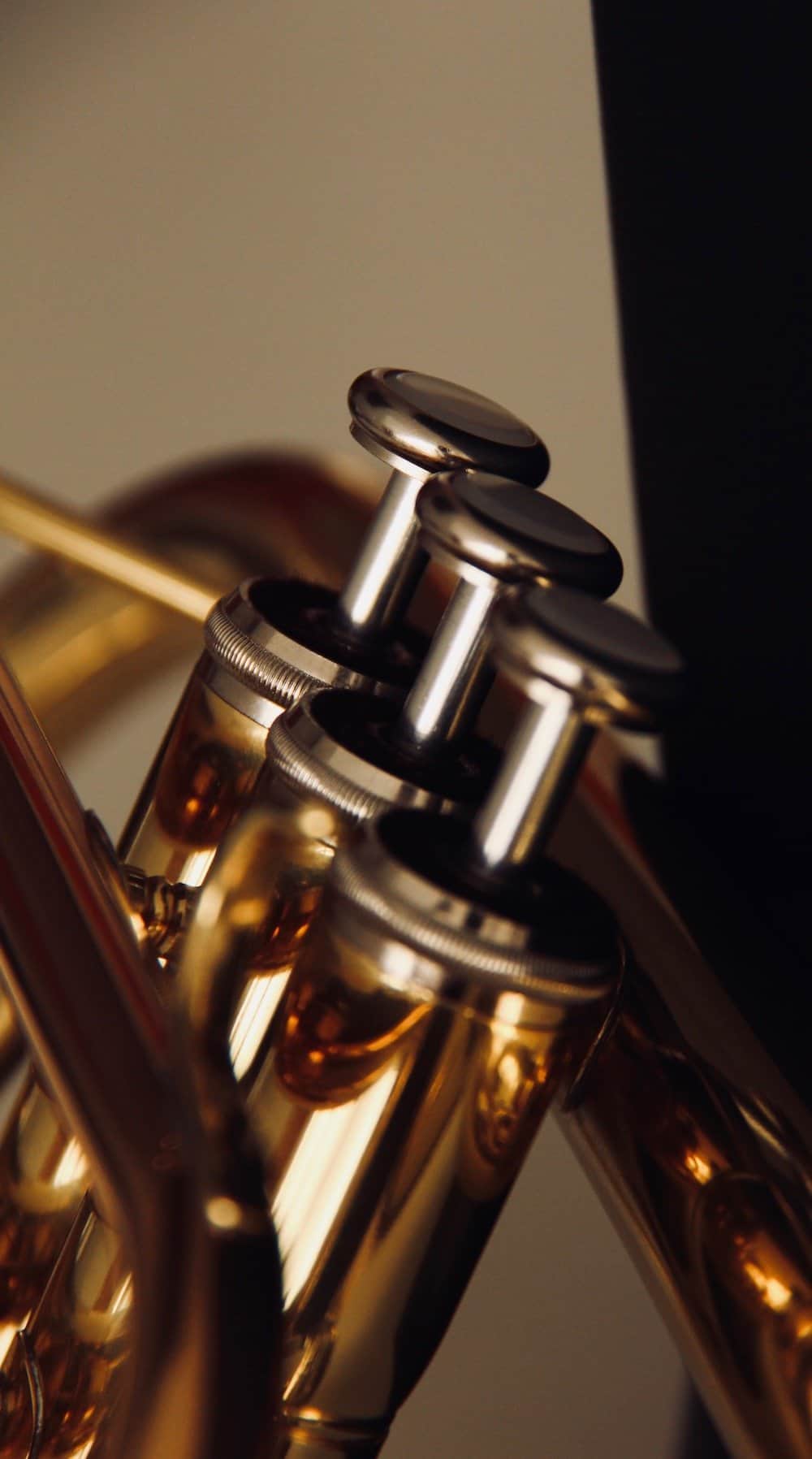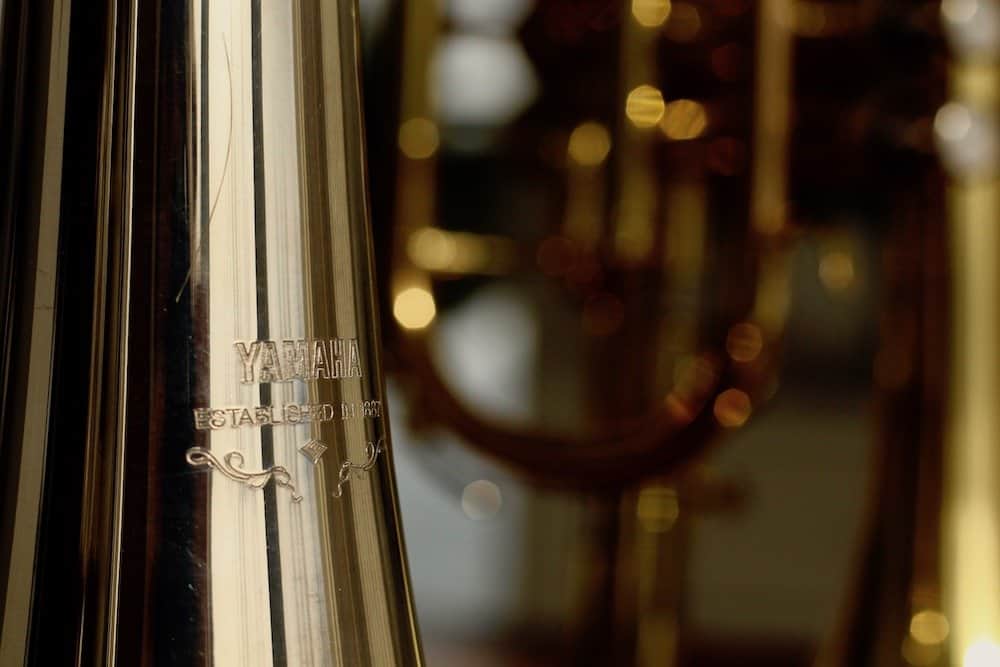This is the place to start if you’re absolutely new or nearly new to the Trumpet.
You can be a Trumpet Hero in your school’s beginning band class, in a marching band, in a jazz band or in a symphony orchestra. While this page is intended for beginners the idea is to get you off to a good start so that you can enjoy being good at Trumpet playing for as long as you like. Here we go:
- Acquire and assemble the instrument.
- Stick it on your face and exhale while allowing your lips to buzz.
If you’re not a beginner you might want to skip to some of the more advanced subjects and disregard things you know to be white lies.

How to Play the Trumpet
Ok, that was easy. Now let’s do it right, or at least better.
There is a lifetime of learning to be done but you can start sounding like a Trumpet Hero soon with if you do a few things right and not many things wrong. That’s the case with most instruments and the Trumpet is no exception. These steps should get you going but don’t be discouraged if they don’t. Here we go again:
1. Your trumpet and its mouthpiece are made of brass.
They use brass because it’s soft and easy to bend. Even though the trumpet is a powerful instrument it is at the same time fragile and not built to withstand any kind of abuse. Be gentle with it.
2. The mouthpiece is the business end.
If it happens here the rest is easy. Place the big end of the mouthpiece against your lips. Lips together with muscles flexed at the ends of the lips. Draw in a comfortably large breath through the sides of the lips and exhale through the mouthpiece. You should get a buzzing sound. No pink fleshy lip tissue should protrude above or below the mouthpiece. Get some skin in the cup. Buzz for a while on a variety of pitches, make a siren noise.
The trumpet will separate that sliding pitch into different notes. A big challenge for beginning trumpet players is getting more than one note. Doing this kind of siren buzzing will help. While buzzing make sure you’re playing long notes rather than short bursts. Trumpet is a wind instrument – you should take and use a lot of air. You will eventually learn to vary the speed and volume of air that you move, but for now just be sure to get it going. If you can’t get any buzzing at all try this trick (scroll dow to #2 on the page that’s linked here) …
3. Assembling the instrument really just means putting in the mouthpiece.
The mouthpiece goes in with a slight inward twist. Don’t pop the end with your hand or you risk getting the mouthpiece stuck. (If you do get the mouthpiece stuck don’t try to get it out with any tool other than a mouthpiece puller – a tool which band teachers and repair shops have and use. Using any other tool will result in damage – perhaps cosmetic, perhaps structural and in any case expensive.) With any luck your trumpet came with a fairly standard mouthpiece. Check the mouthpiece post if yours seems odd, really uncomfortable or just won’t work for you.
While you’re at it make sure that the main tuning slide is out a little (around a centimeter or ½ inch or so). It’s the first slide your air will hit on most trumpets (the second bend on most Cornets).
4. Hold the instrument with your left hand.
All the right hand does is push valves down. Grab the valve cluster comfortably with the left thumb on the near end and the fingers around the far end. One of the fingers will fit comfortably into the 3rd valve slide ring. This ring can be adjusted on most student Trumpets so make it fit. Most folks use their ring finger, some use the middle finger – your preference.
If your 1st valve slide has a saddle, put your left thumb in it. You are going to hold the horn up near horizontal when you play so get it comfortable. If your slide ring is not adjustable and you can’t find the right finger to make it comfortable a repair person can move it for you. I’ve done it myself occasionally but on nice horns I go to someone who’s good at it – the results are prettier.
5. Everybody knows how to blast – we don’t want to hear that.
It’s no good for your chops and hearing damage is permanent. So … without blasting play a long tone with no valves pushed down. Using your ears is crucial in all areas of technique and listening to what comes out starts now. Most beginners will be playing either a G or a low C. (Note to helpers – these notes are F and Bb if you’re banging on a piano wondering what’s going wrong.) Your first important mission is to be able to play each of these notes at will. If you’re getting the G and can’t reach down for the C try relaxing everything (except the cheeks which shouldn’t puff out). If you have the low C and can’t coax out the G try blowing faster – not louder. There are samples of those notes here …
Raise the tongue as though saying “Eee”. That shape inside your mouth might help the air move faster and help get the higher note out. (There is a long and possibly boring explanation of why these notes have the names they do. For now, just be happy if you can find them.) If you can’t yet get more than one note don’t be discouraged. If that keeps happening go to this post.
If the air is moving through the Trumpet, and you’re getting a really low, grumbly sound that seems way lower than anything like a Trumpet should sound click here (same link as above).
Trumpet is an athletic event and you have only just begun training. As you practice your strength will increase and more notes will become available to you. Practice in front of a mirror to make sure you’re holding your instrument correctly with the mouthpiece nearly centred and that you’re not puffing your cheeks. (I use a bit more top lip, some players use less but don’t stray too far from the middle. If you are too far left or right the muscles on one side won’t be able to help when the going gets tough.)
6. Practice alternating between notes.
As soon as you are able to get more than one note in any valve combination (adding valves can make this easier) practice alternating between them. Go back and forth between the notes a number of times in one breath. Breathe and do it again and again. When you are able to play 3 different notes with one fingering alternate between all three. This might take a few weeks of daily practice but it will make you both strong and flexible.
It is also the best way of getting to know which note you’re playing. Do this without tonguing at all. Slur. Why? Because it exercises the right muscles, develops flexibility (the ability to get the notes you want) as well as strength and removes articulation (tonguing) from the process so that you can develop consistent air flow. Arching the tongue for higher notes, as though saying “Eee” and lowering it for lower notes as though saying “Ahh” should help. Here’s proof.
7. You will almost always have to tongue notes so get used to it.
Use the “Tip of the Tongue at the Top of the Teeth.” Say that then play a long note, energizing it with the tongue a bunch of times. That’s tonguing. Don’t let the tongue come out between your teeth or you’ll have sloppy articulation and the whole horn will shake with each note making a real mess of your playing. If you find that your tongue is more effective when the tip remains behind the bottom teeth and the next bit of tongue is doing the work you might be Anchor Tonguing and that works well for some players. Watch this if you don’t believe me – the same as the one above.
8. Many beginning players have a constricted, tense sound that isn’t very pleasant.
This is the direct result of a closed throat. The throat closes automatically when we take a big breath, so we have to unlearn that tendency. Relaxing the throat will help open up and improve your sound. Take a deep breath and sigh … then take a deep breath and play a note. Try to repeat the open-throat sensation of sighing while playing a note.
This is crucial to playing well – even though you can get the right notes with a poor sound, nobody will want to hear them. Listen to the sounds of some really good trumpet players like the ones on the Trumpet Heroes page. Those players all have their own special sounds and styles that they like and have worked on for years or decades. Join them in the pursuit of Trumpet excellence! This is another area where using your ears is crucial.
9. You’ll need the valves right away in band class.
Your teacher will tell you what the fingerings are for each note. (The fingering charts on this site should help too.) Memorize them now while there aren’t very many of them. Use the three biggest fingers of your right hand to push the valves down. Push from above the valves, not across, so that they come straight back up. Arch the fingers as though you’re holding a tennis ball.
The biggest challenge isn’t getting the right valves down, it’s figuring out which of the available notes is coming out. That’s why you have to practice a lot. (btw. If you’re left-handed that’s great and will help you later on when things get tricky. You’re still going to push the valves down with your right hand fingers unless yours are absent or don’t work.)
10. Keep your pinky out of that little finger hook.
You don’t need it and using it will only make you want to pull the mouthpiece harder onto your lips. That’ll hurt your lips after a while so break the habit before it starts. If you feel you need more pressure to form a seal blow your lips onto the mouthpiece instead. Using your arm muscles – especially your left arm – to squeeze your lips flat between your teeth and a chunk of metal will not end well for your lips unless they’re bigger than your arms. Where’s a cartoonist when you need one?
11. Daily maintenance is simple. Oil the valves with valve oil every day.
Squirt a drop or two of oil into the bottom of each valve with the trumpet at an angle and let it flow down the inside of the valve casing. Push the three valves up and down then flip your instrument. Hold it on its other side so the oil will coat uniformly inside. You can purchase valve oil from a music store and you do need it. Leave the 3 valves in when oiling. Don’t take them out or you might have trouble putting them back in and it’s hard on the pistons.
The valves in my 40 year old Trumpet are still working well and sealing just fine. Cleaning the instrument is a subject for another day. For now just keep the mouthpiece clean with water and maybe a little tree-shaped brush if you have one.
12. The slides on your trumpet should be in working order.
You may need to use some tuning slide grease or clean wheel bearing grease on them if they don’t move smoothly. You won’t need to do this very often (usually only after a major cleaning). Don’t pull them out to make that neat suction “pop” sound or you could get some grunge in the valves and irritate your teacher. It only takes a speck of dust in the valves to cause problems. There’s a post here on how to lube the slides. If you have a slide that won’t move or simply falls out on its own you might need a repair shop visit.
13. Water (condensation from your breath) forms inside and collects in the lowest parts of your Trumpet.
To release the water gently blow into the mouthpiece and open the water keys (which most of us call spit valves because it sounds more like fun). Push the 3 valves up and down too. This liquid is condensed water, so it isn’t really gross but it probably has a little valve oil and a little lunch in it as well so it isn’t exactly pure water either. Don’t share it with your neighbour. You’ll want to empty this water every now and then in the rests when you’re playing and definitely before you put the trumpet back in its case. Sometimes I have to turn my Trumpet over and dump water out the bell like a French Horn player. If you have an unexplained gurgle try that.
14. Always store the instrument in its case with the lid closed and latched to prevent accidental damage.
Every now and then someone does something unexpected or even stupid. That someone might be you, it might be someone around you or a bizarre combination of the two. The result can be anything from a near miss to serious damage. I’ve seen a bassoon player knock over a music stand onto a horn, a violinist pick up an unlatched case spilling his $40,000 violin out onto the floor, a trombone fall over while sitting on its stand – and that’s just recently! They were all professionals and should have known better – but didn’t. I should confess to some of my own stupidity but I have a short memory.
Student instruments damaged accidentally often involve being stood up and falling over, falling off things like music stands where they should never sit, being sat upon, and having random items fall on them. Trumpet cases where there is no good place for the mouthpiece are bad news. If that mouthpiece gets loose and can fly around the case it will dent tubing and stop valves. Fix the case or carry the mouthpiece in your pocket,.
15. You have chosen the most regal of instruments.
Get to work and earn the respect and admiration you’ll get!

